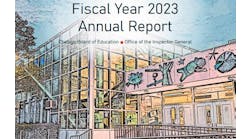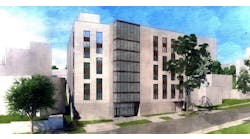In the beginning of camera monitoring systems, one arduous job was having to change VHS tapes every 24 hours on a system that many described as “moon footage” at best. The low-quality black-and-white images often made it difficult to identify what was on the camera. In the past five years, digital video recorders (DVRs) have improved greatly. The digital recording device can store and find images, provide easy viewing and transferring capabilities, and can bring up an image from an incident in minutes compared with hours and sometimes days spent going through VHS tapes. DVRs have become more cost-effective; it is possible to store weeks or months of multiple camera images on a DVR hard drive.
The drawback at a district level with DVRs is they reside at the building level. This makes it necessary to have someone in each building monitor the DVR if an incident should occur. Though it is light years ahead of its VHS predecessor and still widely used in single building solutions, the DVR nearly has reached the limits of its effectiveness.
IP camera systems take existing technologies to create one solution that soon will be in nearly every school district in the nation. The problems it solves are numerous:
-
In an IP networked camera solution, cameras are attached to a district-wide data network. These cameras capture and send live video over an IP network such as a LAN, intranet or the Internet, and enable users to view and manage the camera using a standard Web browser or video-management software on any local or remote computer on a network. Many models use Power Over Ethernet (POE) to power the cameras, which are attached to the network and given an IP address or a DCHP name. This eliminates the need for coaxial cabling to the cameras and allows cameras to be placed virtually anywhere on the data network and managed from a district level. This method still allows access via IP at the local building level.
-
A single data server with adequate storage is housed with the other district servers. This server houses the districtwide IP camera software that usually is controlled by the IT department, not one per 16 cameras in each building as with the DVR model. This solves the question of who will monitor the DVR. One server can house hundreds of cameras. Some software enables those who understand the technology to manage the servers and storage, and those in the schools such as superintendents, principals, teachers and staff to view cameras in their building as assigned by district software.
The bottom line: IP cameras have encryption built right into them, providing for a more secure network. Interference also is not a problem with IP-based models. Because IP-based cameras act as their own network device, schools often can take advantage of existing network wiring. This can make installation much easier.
Day is senior analyst at KBD Planning Group, Young Harris, Ga.., a firm specialized in educational facilities and technology planning. He can be reached at [email protected]. www.kbdplanning.com

